This educational article is of value to artists planning to paint a mural in a public location. It is also invaluable for public offices and departments planning to place public art. Fine Art Conservation Laboratories (FACL, Inc.) has a 3 year contract with the Los Angeles Department of Cultural Affairs to consult, advise and offer art/painting/mural conservation services. See other background materials in the navigation bar of this webpage. We are available to discuss with you your projects. See contact info at the end of this article.
Protecting murals from graffiti is an essential part of the pre-planning of a new mural in a public place. Even if the mural seems out of the way or out of reach, vandals find ways of shooting the paint. The graffiti on this mural goes up about 20 feet.
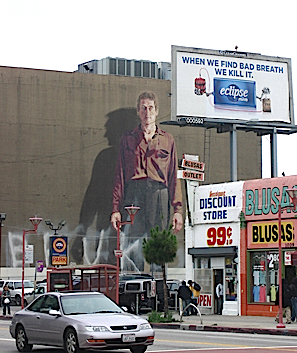 Before we can discuss the types of protective varnish to use, you need to understand the premise for choice. In the professional mural conservation field, when asked how long should art last, we think in terms of “generations.” Murals are part of a community’s heritage, part of the architecture, part of a community’s vibe and culture. They are not just a decoration.
Before we can discuss the types of protective varnish to use, you need to understand the premise for choice. In the professional mural conservation field, when asked how long should art last, we think in terms of “generations.” Murals are part of a community’s heritage, part of the architecture, part of a community’s vibe and culture. They are not just a decoration.
As professionals, we are bound by Standards of Practice and a Code of Ethics. These prevailing standards would theoretically imply:
- We do no harm to the original artwork… the materials we use should not cause harm to the original mural as they age or if they have to be removed
- This means, also, that anything we do to the mural should be reversible or safely removable in the future… even distant future.
Here lies the conundrum: Murals painted in acrylic paint remain very soluble-dissolvable (Keim and oil to a lesser degree but still…) forever. So, cleaning with anything except water is a problem. Of course, very little of the stuff sprayed, spilled or deposited on murals is cleanable-removable in water. Solvents and citrus based strippers used to remove graffiti also attack-remove the original paint.
In other words, ANYTHING that is used to varnish the mural, will become part of the mural because it cannot be removed safely (for the artwork). So, let that idea percolate for a moment… if the varnish yellows, that will be the look of the mural in the future and there will be no way possible to remove the yellow. If the varnish cracks and peels (obviously unevenly) then you can’t remove it to redo it later. This photo shows the discoloration of a poor quality protective layers (poor choice).
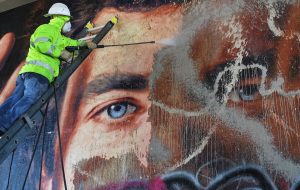
The brownish see-through haze that is being cleaned away is the unstable varnish and wax once used to protect the mural. This discoloration is an unacceptable condition and the very hard resin very hard to remove.
Despite this warning or inevitable negative situation, some entities have chosen a hard polyurethane “permanent” protective varnish over a sacrificial layering of removable or “thinnable” varnish. I think their choice is based on ignorance based on the opinions of non-conservation-preservation services within their bureaucratic channels, not because there has been a logical choice .
The two schools of thought for the choice of protective layer or varnish are:
- The City of Los Angeles has adopted a policy, with the excuse of future minimal maintenance, to use a “permanent” hard coating. The name is “GCP 1000”
Its an aliphatic polyurethane topcoat. Here is the link for application instructions. I suppose that because this is a commercial product, that this appeals to bureaucrats. I’ve also been told that some graffiti can be removed from this protective layer with a commercial cleaner called Goo Gone (another long term preservation problem). Here’s a link about this material.
Blue Moon Trilogy by Russell Carlton (1987) was varnished with this mandated protection.
The Department of Cultural Affairs chose this material at the recommendation of their graffiti abatement contractor.
2. A “sacrificial” varnish layer is one that is applied so thickly that when tagged, the graffiti can be removed along with a layer of varnish without having to remove all the varnish. This means that the cleaning-removal solutions don’t come into contact with the original paint. After the graffiti removal, the surface needs to be re-protected or in other words, the sacrificial varnish layers need to be reapplied.
The resin used for the sacrificial layers is not a commercially available product, but can be purchased from conservation suppliers. The resin used is Rohm and Haas’ Paraloid B72. We usually spray apply 4 heavy coats of 15% solids (in xylene solvent). Then we follow up with 4-5 coats of 30% in xylene applied with rollers as thickly as can be possible applied without creating drips. On the mural in the video below, the artist originally thought to apply the thicker sacrificial layer only up on the wall about 8’. But yielded to reason when I showed him the nefarious techniques some vandals use to spray way up high on walls. So, we applied all the layers over the entire mural.
This photo shows the before and after of removing a decade of graffiti off of a thick protective sacrificial varnish.
Here is a quick video of applying the sacrificial varnish layer to a new mural at street level in Northridge (Los Angeles), CA and a short testimonial for our collaboration.
For more information contact Scott M. Haskins, Oriana Montemurro, Virginia Panizzon, Art Conservators, 805 564 3438 faclartdoc@gmail.com

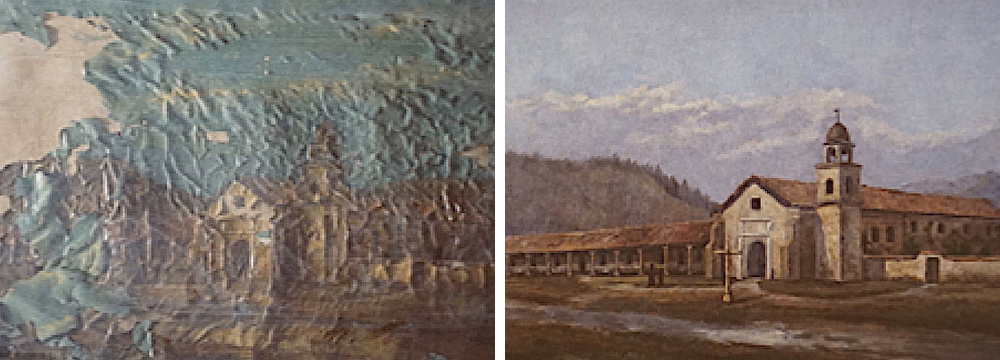
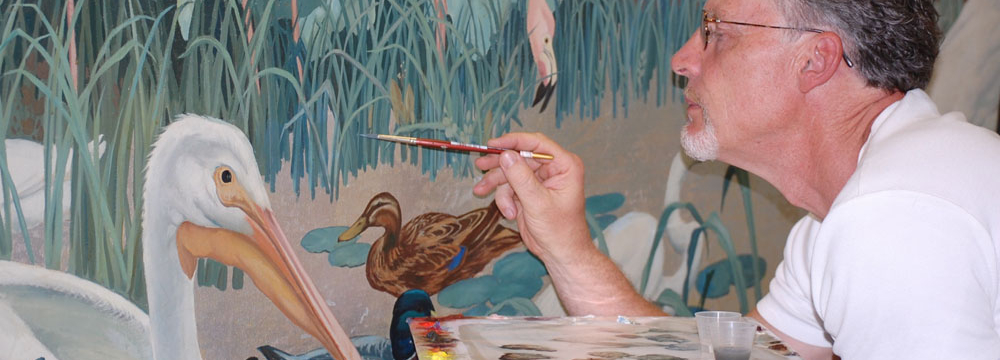
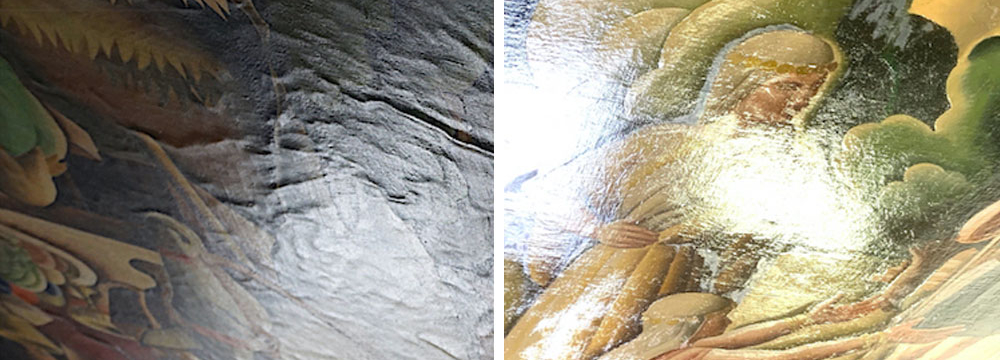

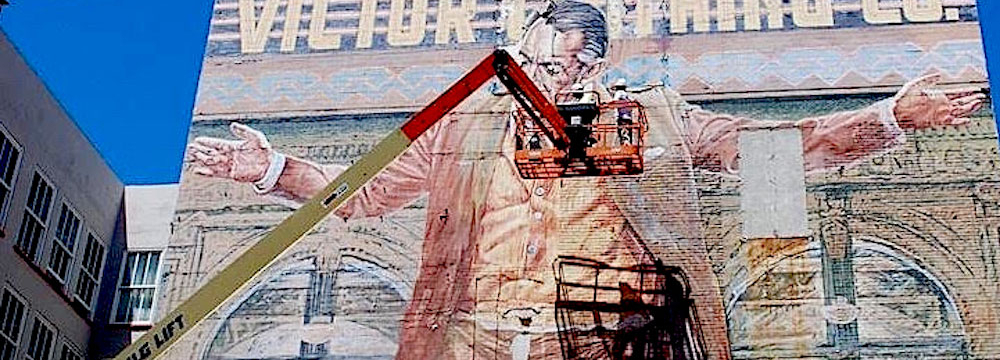
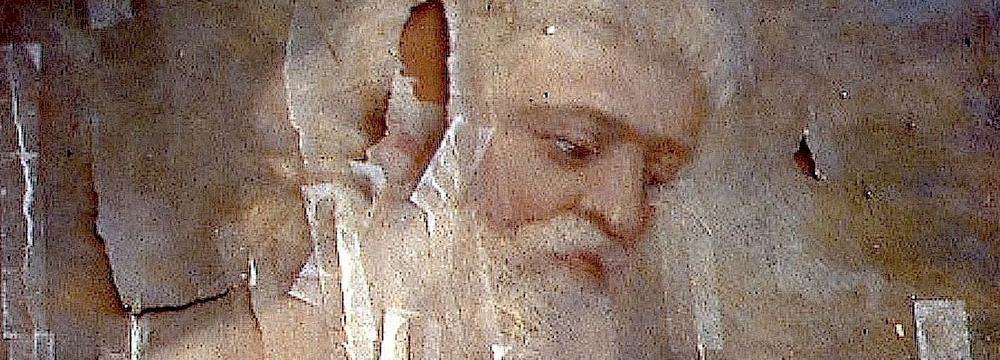
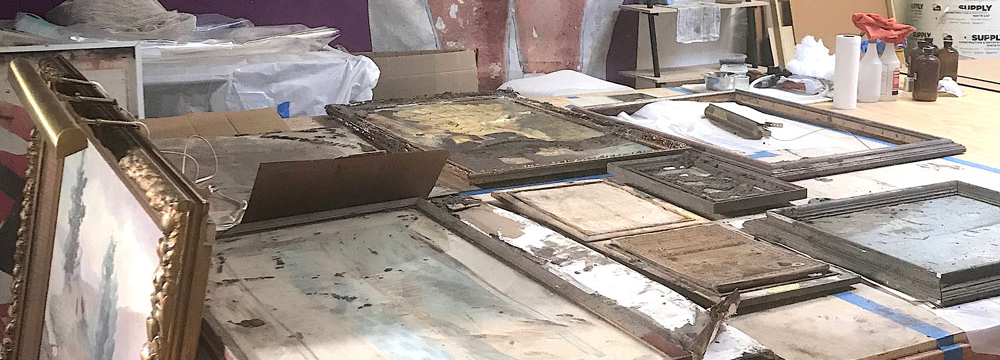

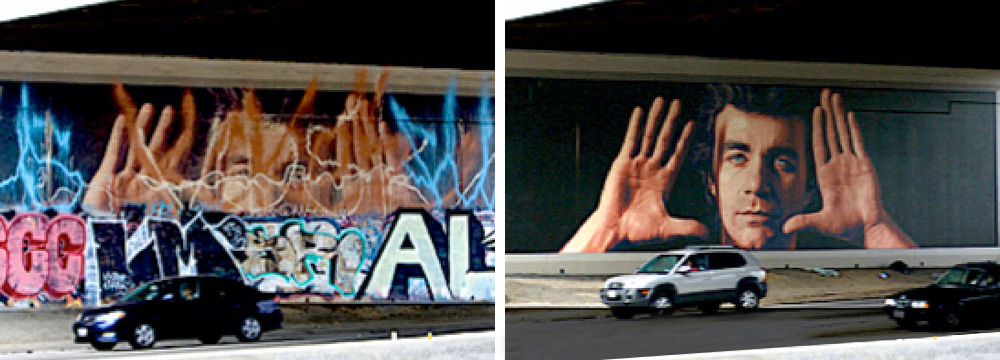
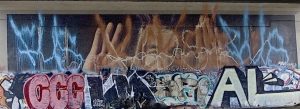
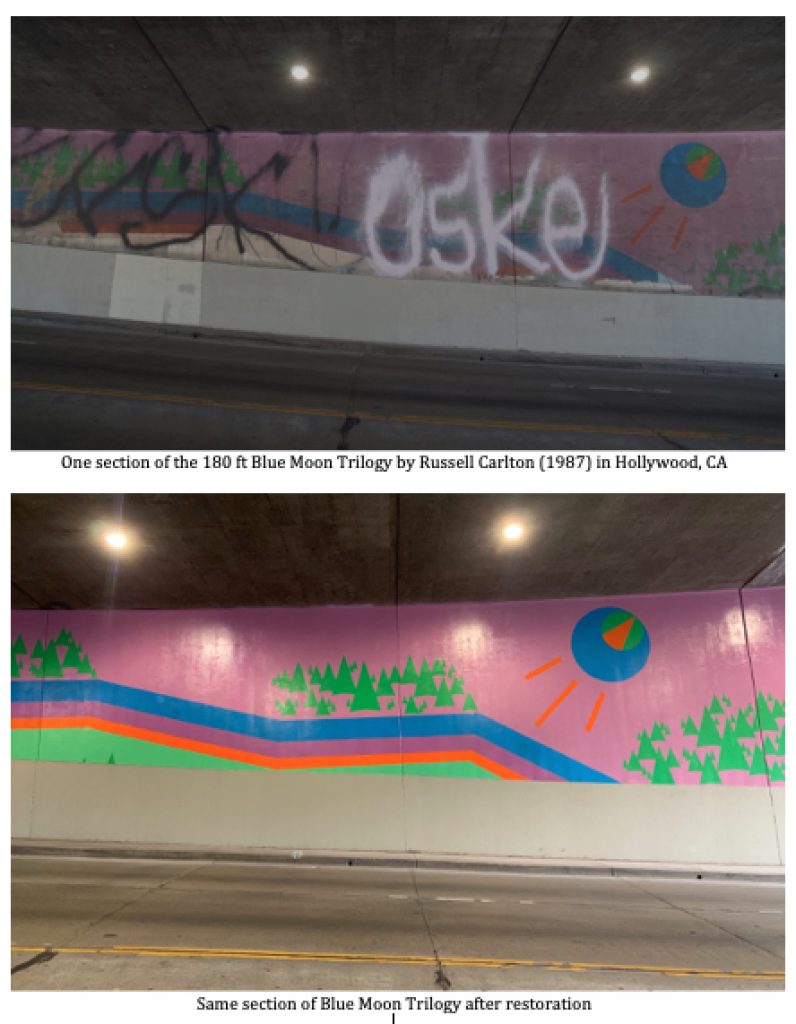
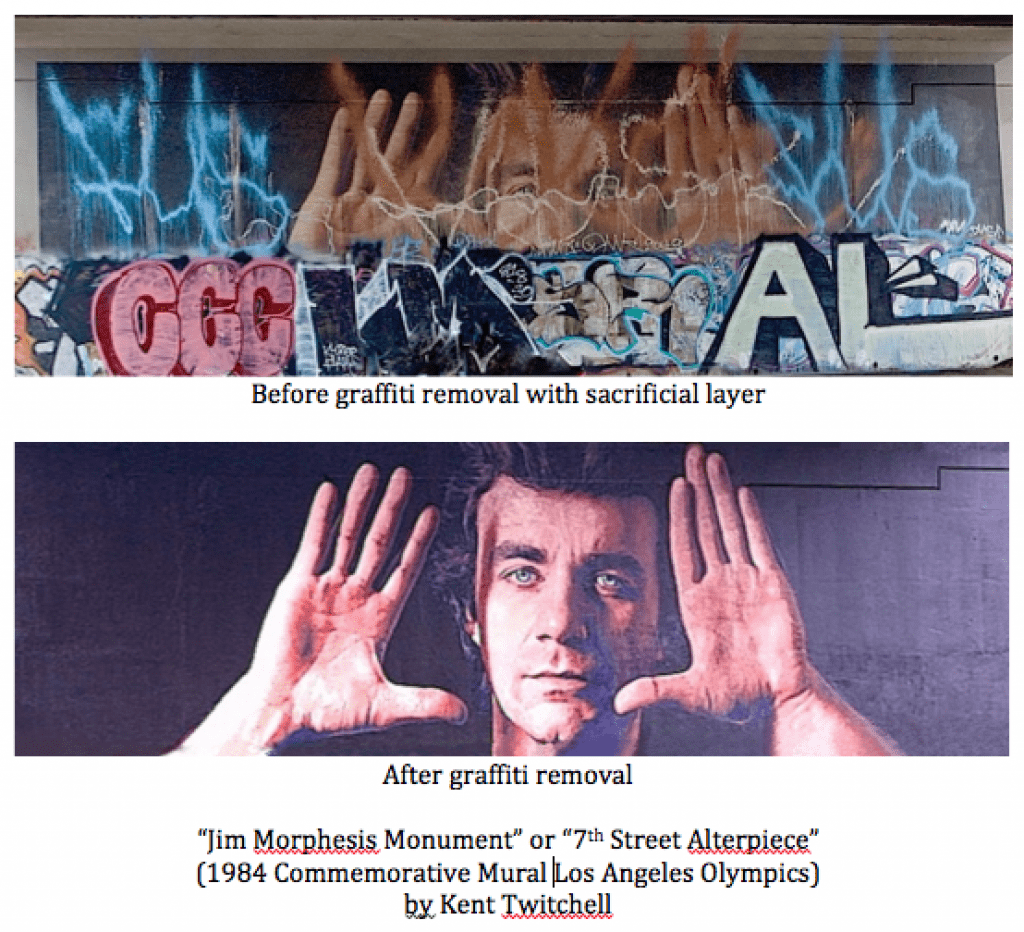
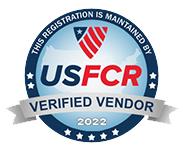
I’ve just done a painting in acrylic of a sunflower on a bike rack board outside a local shop in my village in uk and i am concerned with any potential vandalism as seems to be more young teenage lads and some scratch with keys. I had considered a polycarbonate protective cover being made to fit but then there is complication of it getting condensation inside with screw bolt holes. What on earth can i use now as have put a coat of Galeria Satin Finsh over it but i know it wont give protection i want?
Hi Angela, There are several things we need to discuss. It would be better to do it with email or even better perhaps we could chat with WhatsApp?
Scott M. Haskins
faclartdoc@gmail.com
Scott, we have a project coming together in the Riverside, CA area and have some adhesive/resin questions. Can we discuss?
Thanks Edward for reaching out. The Los Angeles area (and OC) are easy access for us but we fly around the country to meet with people to discuss mural projects and even have a couple of international consulting jobs at the moment. I (we) are in your area almost weekly and would love to come by for a chat. Give me a call at 805 564 3438 office or 805 570 4140 mobile to set it up. Looking forward to it!
I’m redoing a mural in the Los Angeles area at street level that will probably be redone in 5-7 years. My last mural (which I’m painting out after 7 years) never got tagged so I’m not too concerned about this one. The sacrificial layer with B72 seems too much effort for protection that really isn’t needed? What do you think?
Hi Barry, just because you dodged a bullet, doesn’t mean you won’t be hit in the future. But, aside from the graffiti protection, the mural will look its best with a protective varnish. A single or double application of B72 will do the job if you are not worried about graffiti. If you want a more resistant, harder coating, use a single coating of the aliphatic polyurethane recommended by the City of LA.
I’ve painted a mural on the side of a barn where graffiti is not an issue. So, what kind of final protective finish do I need?
Thanks for leaving your question Beth. There are many details to discuss. Best to give me a call – 805 564 3438 office. In the meantime, consider which way it faces, how thickly you painted the mural, how long do expect or want it to last. TTYS
Greetings from Ireland! I hope you do not mind me asking you a question, having watched your interesting video on YouTube about properly sealing murals (the link from the video brought me to very informative page). My friend is almost finished doing a huge exterior mural for his local town committee. I have been unable to find a sealant here which I can be sure will do the job correctly. Could you please let me know the name of the sealant you use? He is unable to spray it on due to constant windy conditions, so he will have to use a brush. Thank you very much for your time. Best regards,
I’m not sure what kind of products are available in your area so take the specs/data from this page’s references and ask local paint or artist store. Consider the following: I’ve discussed two different functions or types of varnish, 1, as a barrier and 2. as a sacrificial layer. Which one do you want to use. I can’t answer that with the limited info you gave me. Consider applying your final varnish with a paint roller.
I enjoyed the information, I have sprayed on two coats of a B72 mixture on some fading or peeling murals, usually on stucco or brick. These latex based murals are usually touched up after. Should I do the touch ups first then the coatings. Our murals get weather extremes from hot to freezing.
Grant, thanks for the good comment. You’ll notice the when you put the B72 on your mural, the color is more saturated and the colors more alive. For this reason, you put the B72 on before you touch up. That way, your touch up colors match better. But remember, that the solvents in the B72 (xylene) will dissolve the paint of your mural and the touch up paint. So, don’t “work it into the mural” with a brush. Better to spray it, especially after you do your touch up. For protecting a mural from graffiti, there are a couple of things that help to win the war; 1. the thicker the mural is painted the better and 2. the thicker you apply the protective anti-graffiti layer the better… in this case, more is always better.
Pingback: Historic Mural Memorializing Heroic AIDS Research Is Destroyed by Graffiti Vandals. Public Art Was Sponsored in 1988 by AIDS Project Los Angeles. Mural is Saved and Restored in Hollywood, CA. – Articles Blogs & Videos
Pingback: Huge Hollywood Mural Monument To Successful AIDS Research Is Being Saved and Restored | Fine Art Conservation Laboratories (FACL, Inc.)
Pingback: Street Art Visit in Houston with Scott M. Haskins, Mural Conservator – Articles Blogs & Videos
Scott,
Thank you for sharing your knowledge! Over the years I’ve used a variety of paint products and have always questioned the proper way to varnish exterior murals. The Paranoid B72 sounds very similar to Goldens MSA which I’ve used several times. While the MSA is a fine product that contains some UV inhibitors and is sacrificial, it has a bit of delicate quality.
I’ve been searching for a protective coating for an upcoming public art mural that is located in a highly trafficked area which is very accessible to potential graffiti. After reading several of your blogs on this subject, and watching some of your videos, Ive got a rough blueprint of the approach. If I’m properly understanding the approach, first a couple layers of B72 are sprayed, and once dried, heavier coats are then rolled. All of this is applied directly to the surface of the mural without an isolation coat?
Looking into purchasing Paranoid B72, I’ve found several suppliers with technical information on the product, but have been unable to find an approximate spread rate. With your experience using this product on murals, could you give me an idea of the quantity involved to properly varnish a 2500 sq ft mural and how many passes would be involved?
Thank you for your time and knowledge!
Hi Jeff, Give me a call to discuss! 805 570 4140
TTYS
Scott
Hi Scott,
Thanks for the write up, links and sharing your knowledge.
What solvent is used to remove the outer layer of the cured Polaroid B72 and how is it applied?
Does the Polaroid B72 offer U.V. protection and if so to what degree/ percentage?
How vulnerable is the cured B72 coating to absorbing air pollution into it’s surface?
When you say the B72 is applied at 15% solids in xylene does that mean that 85% of the mix is xylene and 15% is B72?
Years ago I used to use a Dana Color acrylic clear coat on billboards years ago that was called Plastic Shield.
It was thinned with mineral spirits to vary application consistency. The cured material would melt if washed with mineral spirits or other solvents. I am wondering is this was a similar material?
Thanks
Hey Christian,
B72 is diluted and removed with xylene or toluene. Acetone works too but it evaporates too quickly.
B72 does not offer UV protection, which is a useless trait anyway for outdoor murals. Fading still occurs even with UV inhibitors.
I’ve seen B72 turn very gray when applied to murals along a highway with a lot of traffic. General air pollution will not affect this resin more than others. Otherwise, it is a conservation profession vetted material and has been in use as a coating for paintings since the 1960s.
15% solids means 15% solids of B72 with 85% xylene.
Coating for billboards are not meant to last a long time… only the life of the billboard. A proper application of B72, proper maintenance will give better protection for a longer time. I’ve seen it last decades and it could last longer if it didn’t get tagged, was not in direct sun and was not exposed to water.
Resins that dissolve in mineral spirits are A LOT softer than B72 and will have several negative characteristics.
Christian, these were all good questions. If you have any others, perhaps we should talk on the phone? 805 564 3438 office (CA time). Best wishes. Scott
This is good. I like the knowledge sharing. Now I know that I can use sacrificial varnish to remove and also reapply. Thanks for this. Really helpful.
Glad to help Barrick. Thanks for leaving a comment.
That’s my suggestion too. Consider using Paranoid B72 as thick as you can apply in several coats. Thanks for leaving a comment.
Great article- clear to understand and I hope that it is able to reach many artists considering these topics’